Shu embroidery, as the longest-standing embroidery in China, is one of the four famous Chinese embroidery, along with Su embroidery, Xiang embroidery, and Yue embroidery. The hands of Shu embroidery weavers not only hold a precious craft, but also carry thousands of years of reproduction and imagination of flowers, birds, trees, rivers, and nature.
Take a look at the history of Shu embroidery and its exquisiteness with Cosmopolitan's interview with Wang Xia, the inheritor of Shu embroidery.
The treasure of Shu embroidery begins at the tip of a needle
The art of Shu embroidery, which began with a needlepoint, is a luxury for modern people, it is a craft that has been passed down for over two thousand years. Shu embroidery, with its bright and delicate colors and exquisite needlework, has formed its own unique charm, and its richness ranks first among the four famous embroideries.
In fact, the history of Shu embroidery dates back to the Western Han Dynasty. "The industry of female workers, covering the world in clothes," was recorded in the "Book of the Later Han". At that time, the literary writer Yang Xiong described the scene of embroidering silk that could be seen everywhere in Sichuan in his poems.
During the Three Kingdoms period at the end of the Han Dynasty, Shu embroidery was already famous throughout the country. The "Huayang Guo Zhi" called this precious embroidery product the "treasure of Shu". By the Tang Dynasty, Shu embroidery had become a tribute to the imperial court.
In the mid-Ming Dynasty, needlework techniques such as picking, pulling, and twisting with cotton thread on cotton cloth were developed. In the mid-Qing Dynasty, there were embroidery workshops specializing in the production of Shu embroidery, official clothing, and clothing for the upper class.
Fish Pattern in Sichuan embroidered
As a precious treasure of Sichuan, Shu embroidery has always been a fascinating craft due to its intricate yet complex weaving techniques. Shu embroidery artisan Wang Xia was initially drawn to it by its delicate yet complicated stitching methods. It was during the summer of 2007 when she followed her sister to a local Shu embroidery training center and encountered the quiet embroidery studio where the masters were stitching. Curiously, she stood beside an embroiderer and watched her fingers fly up and down, crafting a lifelike lotus carp.
"At that moment, I was studying their embroidery techniques and wondered how the needle could move so quickly in their hands. I stood there and watched for the whole afternoon." It was this prolonged fascination that intertwined her life with the silk threads that lay before her. Later on, the Shu embroidery master asked Wang Xia, who had stood by for so long, "Would you like to learn?" She agreed without hesitation.
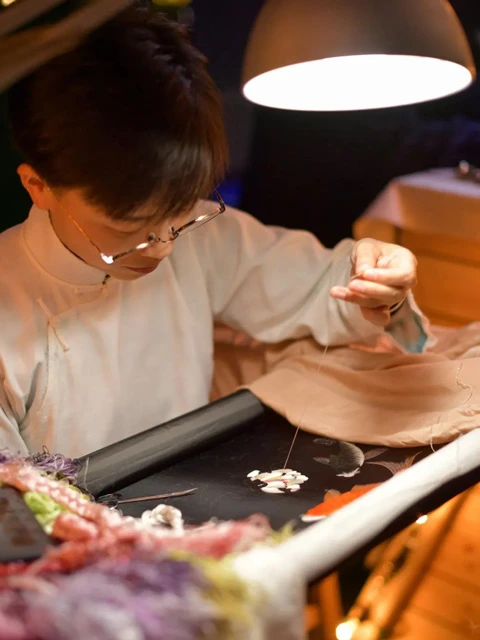
Wang Xia
In her mind, embroidering exquisite patterns on delicate fabric is like depicting a detailed and refined Gongbi painting. The flowers, birds, fish, and insects that slowly emerge on the cloth are so vivid that. It seems that once the masters loosen their hands, the fish will start swimming on the embroidered cloth.
At the outset, she pursued her studies under the tutelage of the renowned Sichuan embroidery masters, Meng Dezhi and Yi Min. Both instructors possessed their own distinctive personal styles of teaching, with Yi being easygoing and Meng being stern. In the midst of such a combination of leniency and strictness in their guidance and expectations, Wang Xia's fundamental skills rapidly progressed. Her innate diligence and dexterity also allowed her to quickly distinguish herself.
In 2012, Wang Xia participated in a significant and arduous task within Meng Dezhi's team, to create a large-scale embroidery piece for the Great Hall of the People within four months. Such exquisite works of Sichuan embroidery often require several years to complete. Under such a tight time constraint, Meng, who was always strict, selected 33 skilled embroiderers with the strongest teamwork and aesthetic abilities from the class, including Wang Xia, to work together on the piece titled "Autumn Scenery of the Plateau". The work, which was 7.5 meters long and 3.4 meters high, was made with the finest Gong satin as the base material and embroidered with silk thread. Wang Xia and the other embroiderers worked in three shifts, totaling 12 hours a day for over three months, until they finally completed this splendid masterpiece.
Threading a thread into the eye of a thin needle
Until now, when Wang Xia talks about the person who has influenced her the most on the Shu embroidery road, it is her teacher for over ten years - the Sichuan Provincial Master of Arts and Crafts, and the representative of intangible cultural heritage inheritance of Sichuan embroidery, Wu Xueqiang.
As a child of the Sichuan embroidery factory, Wu Xueqiang was deeply influenced by Sichuan embroidery. He was intelligent, rebellious, but also able to settle down and concentrate. During his apprenticeship, he followed his master to embroider a huge double-sided embroidery "Lotus Carp", which is still hanging in the Sichuan Hall of the Great Hall of the People today.
Wu Xueqiang not only taught Wang Xia various complex embroidery techniques: double-sided embroidery, irregular shape and color embroidery, etc., but also let her understand and master the entire process of completing a piece of Shu embroidery work: designing the embroidery pattern - drawing the pattern - stretching the fabric - threading - embroidering - mounting.
Each link in this process requires one to ponder and practice in order to achieve perfection. Taking the most classic Shu embroidery fish as an example, this is the most basic test for Sichuan embroidery craftsmen - "often, the master will decide whether to teach you the embroidery technique of the fish according to your level and attitude". The embroidery process of the Sichuan embroidery fish is also extremely delicate and complex.
Before picking up the needle, many tasks have already begun. Firstly, it is necessary to observe the number, size and position of the fish in the embroidery pattern in order to carry out the wiring. Generally, at least eight colors are needed for a fish, and even more colors are required for larger fish. Next, it is necessary to determine the direction of the fish's body and the embroidery position of each color on the fabric. There are many details to consider, such as "how much does each color account for, what is the state of each fish, such as whether it is wagging its tail or not, the color distribution of each fish fin, and the positioning of the fish's eyes".
Only by planning all of this in advance can the embroidery work begin, and the real test has not stopped here. Shu embroidery uses Si (丝) as the unit of thread, with 16 Si in a single strand of thread. During embroidery, it is often necessary to determine how many Si to use in a particular area based on the actual situation. For example, when embroidering fish eyes, in order to increase the brightness and texture of the eyes, only single Si can be used to embroider slowly. Separating a single Si from a strand of thread, and then threading it into a fine needle eye, is a challenge that many people cannot achieve. It tests not only patience, but also a long-lasting determination.
Presenting the most complex works with the simplest techniques
Shu embroidery ranks at the forefront of the Four Famous Embroideries in terms of its exquisite craftsmanship and attention to detail. However, its complexity often makes it difficult to learn. Perhaps the reason why Shu embroidery has not disappeared in such a long history is because within its complex techniques, it contains the ultimate truth of simplicity.
In Wang Xia's mind, her true first masterpiece was not the traditional flowers, birds, fish, and insects of Shu embroidery, but a desolate and strange double-sided embroidered Buddha head. When Ms. Wu handed it over to Wang Xia, her advice was simple: "just use the needle techniques you have learned to complete it," with no further demands.
The reference for the embroidery was a sculpture photo, in which many details of the Buddha head were blurred and could only be reproduced through imagination. This kind of subject matter, which has a strong realistic style, rarely appears in Shu embroidery works, and the requirement of double-sided embroidery makes the difficulty even higher.
She envisioned a Buddha head covered in moss enduring the erosion of time, yet still maintaining its inherent emptiness, precisely because of the original intention of all things returning to one. Thus, she decided to use only one needle technique - the overlay stitch - to complete the entire embroidery of this work.
During her long apprenticeship, Wang Xia was already familiar with various needle techniques of Sichuan embroidery, but she always believed that various needle techniques are not the most difficult to master in Sichuan embroidery. It is more interesting to use simple needle techniques to present the complex layers in the work. All techniques have methods that can be learn, and you can practice diligently to improve your skills, but the understanding of the work is always different for each individual."
Perhaps it is her unique understanding and appreciation of techniques and works of art that has allowed Wang Xia to climb the summit step by step: winning a bronze medal at the 2017 Chengdu Skills Competition, being named one of the top ten embroiderers in 2017, receiving the title of "Chengdu Technical Expert" in the same year, being named the first Chengdu Arts and Crafts Master in 2019, and winning a bronze medal at the China Arts and Crafts Exhibition in 2019 for her unique, colorful, and unconventional Sichuan embroidery piece "Years".
She has found that only by breaking free from conventions can this thousand-year-old craft be carried forward. She has gradually accumulated her own works, established a personal studio, increased external exchanges and teaching, and tried to conduct workshops in various places, while posting Sichuan embroidery works with explanations of the embroidery process on social media and launching courses that combine online and offline methods.
All of this has yielded results beyond her expectations: some people have seen her various Sichuan embroidery works uploaded online and, following the techniques she demonstrated in the videos, embroidered each piece themselves; some people have actively encouraged her to boldly set up online courses, even though she had never thought before that she could teach strangers how to pick up needles and learn Sichuan embroidery through the internet; various schools and art centers seek to collaborate with her, and her works are gradually being collected by major public or private museums.
It is through the hands of generations of Sichuan embroidery craftsmen, with each stitch and thread, that the splendid history of Sichuan embroidery has been created.
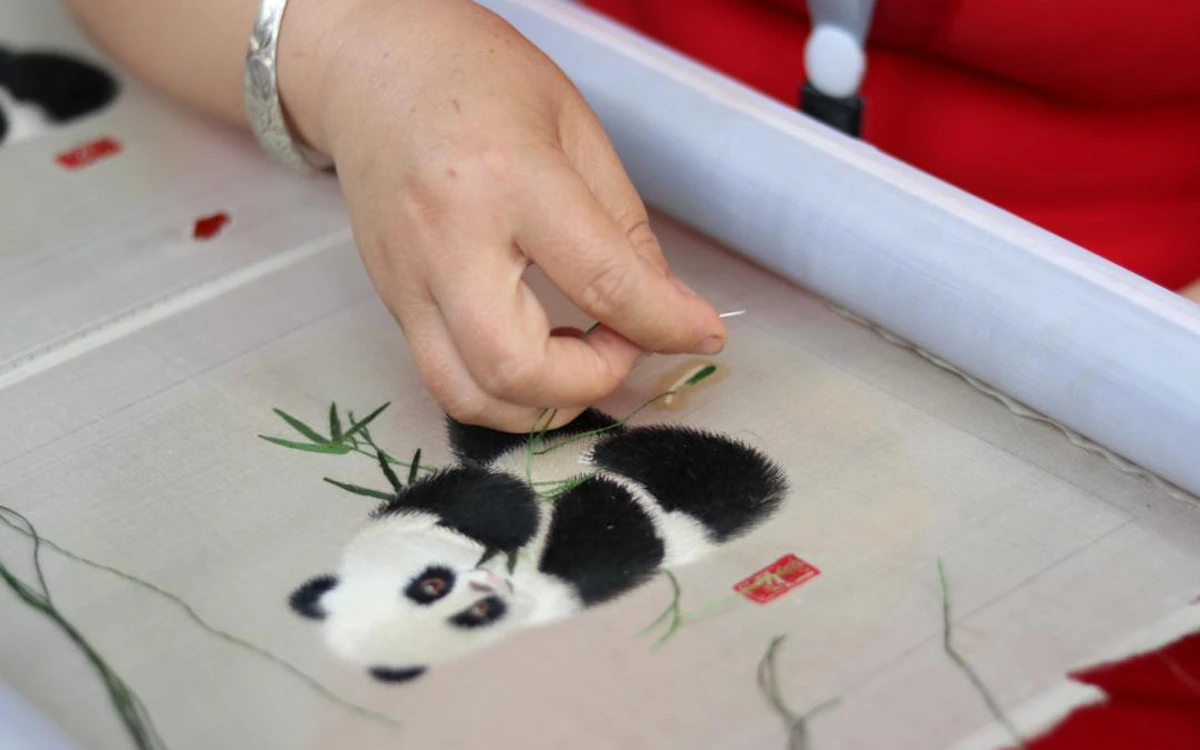
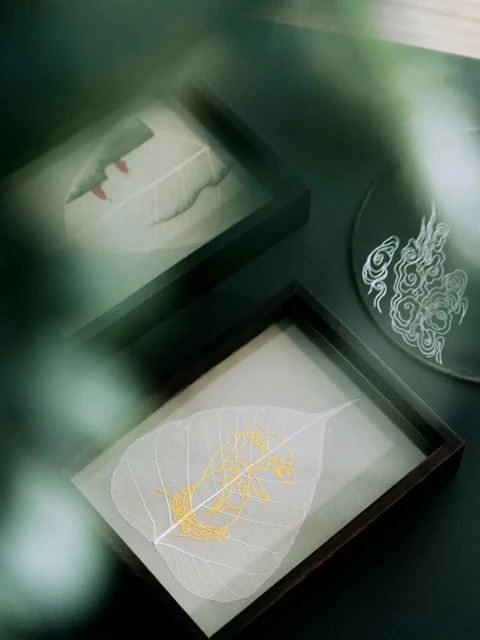

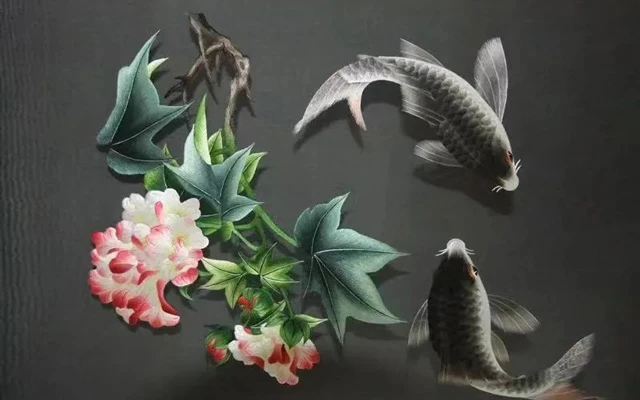
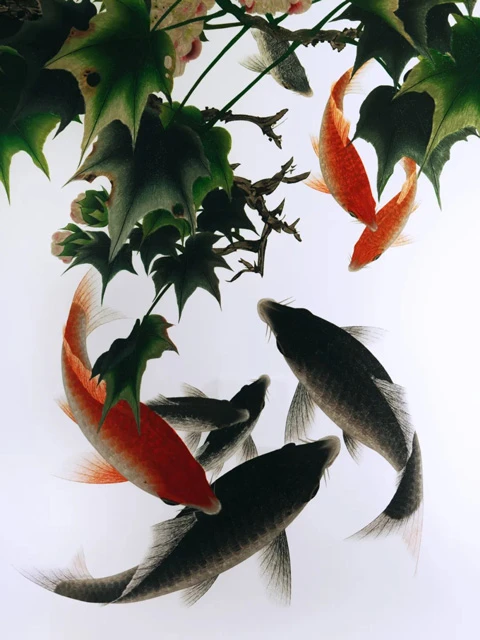
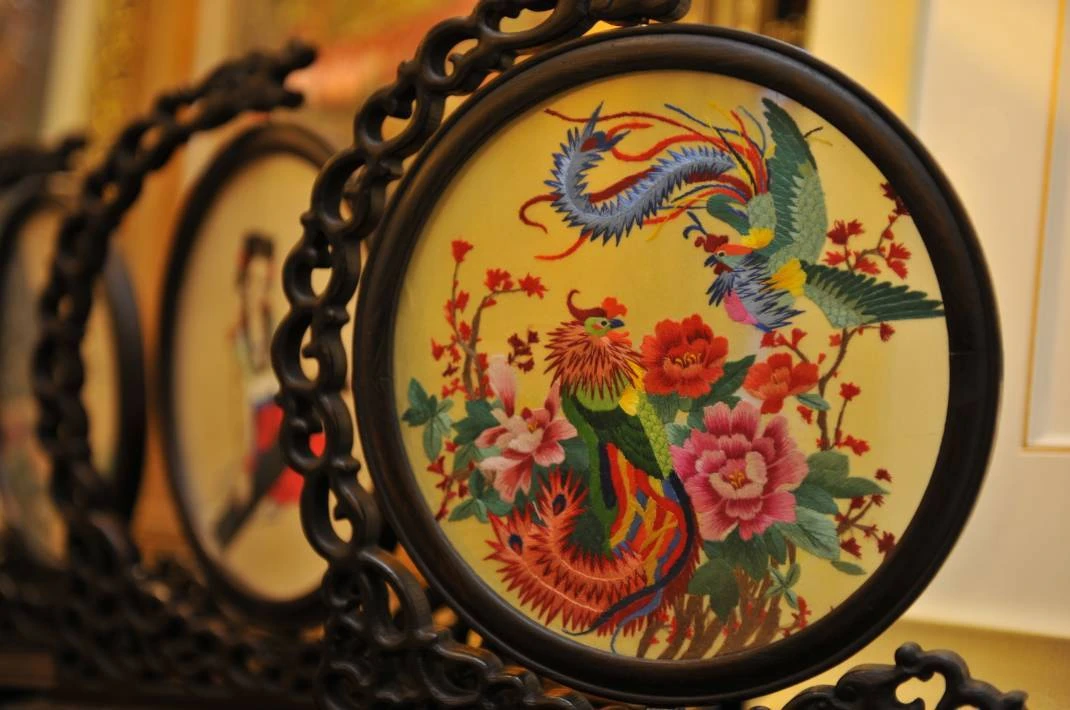
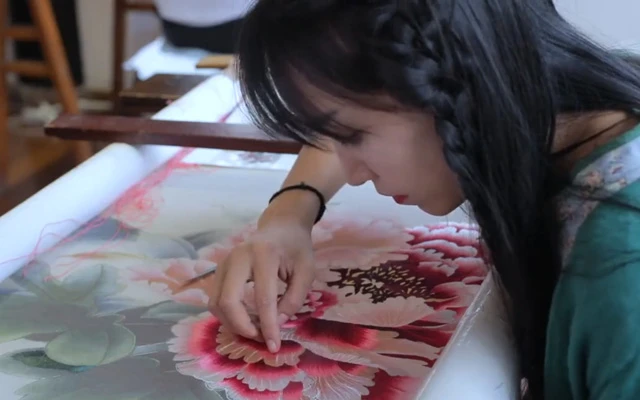
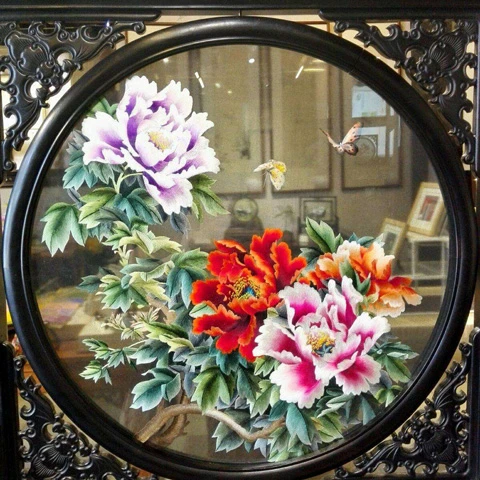


Amazing😍
It amazing, 😍
Wow very nice 😍
Thank you for articel